Hierarchy of Needs and the Measurement of Poverty and Standards of Living Joseph Deutsch
Visit to download the full and correct content document: https://ebookmass.com/product/hierarchy-of-needs-and-the-measurement-of-povertyand-standards-of-living-joseph-deutsch/
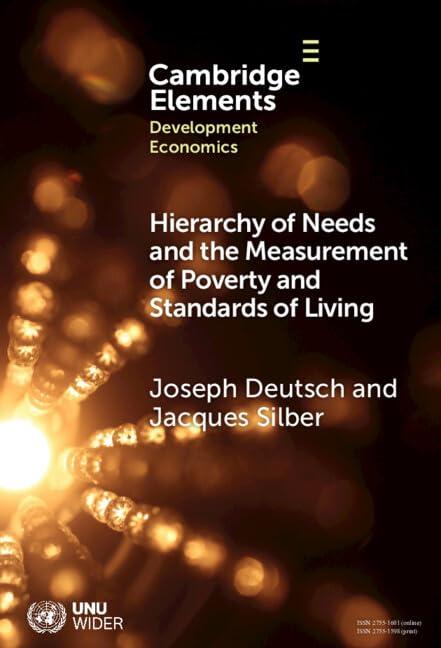
More products digital (pdf, epub, mobi) instant download maybe you interests ...
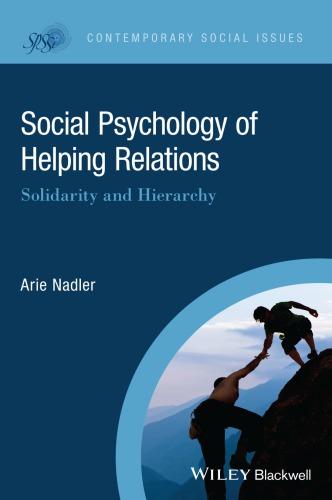
Social Psychology of Helping Relations: solidarity and hierarchy Nadler
https://ebookmass.com/product/social-psychology-of-helpingrelations-solidarity-and-hierarchy-nadler/
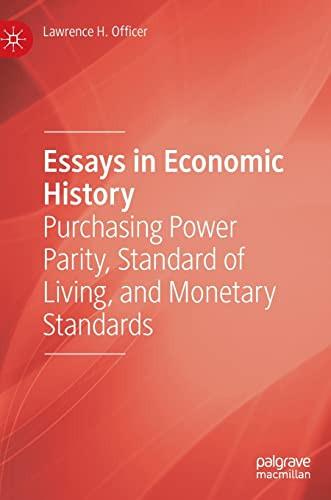
Essays in Economic History: Purchasing Power Parity, Standard of Living, and Monetary Standards Lawrence H. Officer
https://ebookmass.com/product/essays-in-economic-historypurchasing-power-parity-standard-of-living-and-monetarystandards-lawrence-h-officer/
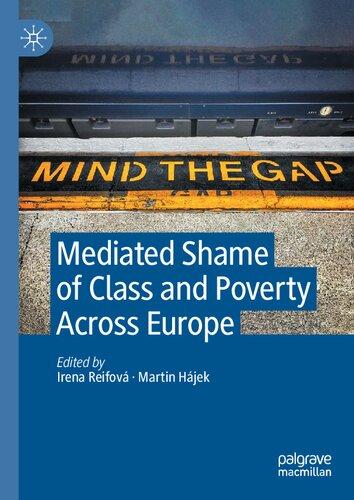
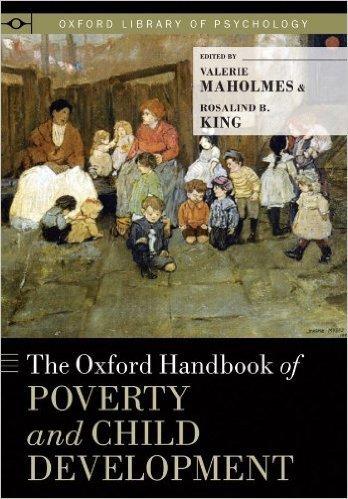
Mediated Shame of Class and Poverty Across Europe Irena Reifová
https://ebookmass.com/product/mediated-shame-of-class-andpoverty-across-europe-irena-reifova/ eTextbook 978-0199769100 The Oxford Handbook of Poverty and Child Development (Oxford Library of Psychology)
https://ebookmass.com/product/etextbook-978-0199769100-theoxford-handbook-of-poverty-and-child-development-oxford-libraryof-psychology/
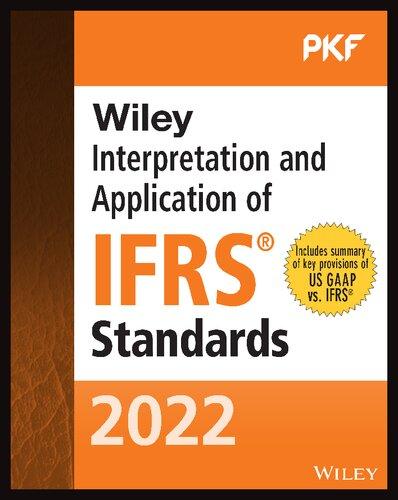
Interpretation and Application of IFRS Standards 2022
Alibhay S.
https://ebookmass.com/product/interpretation-and-application-ofifrs-standards-2022-alibhay-s/
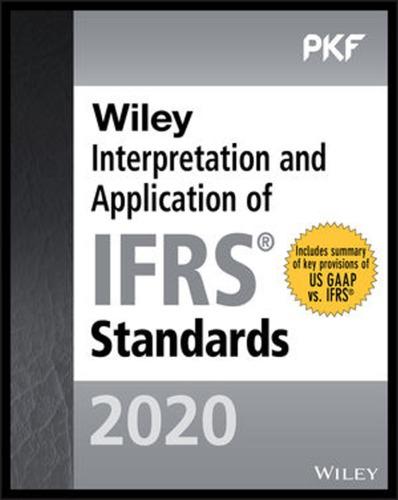
Wiley Interpretation and Application of Ifrs Standards
2020 Ltd
https://ebookmass.com/product/wiley-interpretation-andapplication-of-ifrs-standards-2020-ltd/
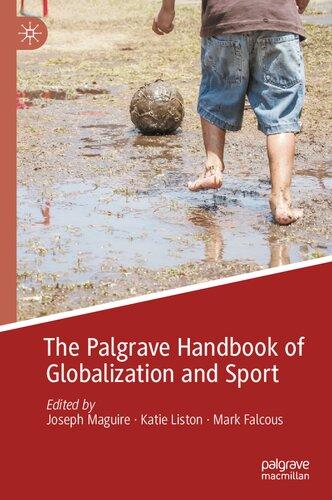
The Palgrave Handbook of Globalization and Sport Joseph Maguire
https://ebookmass.com/product/the-palgrave-handbook-ofglobalization-and-sport-joseph-maguire/

Connecting the Internet of Things - IoT Connectivity Standards and Solutions Anil Kumar
https://ebookmass.com/product/connecting-the-internet-of-thingsiot-connectivity-standards-and-solutions-anil-kumar/
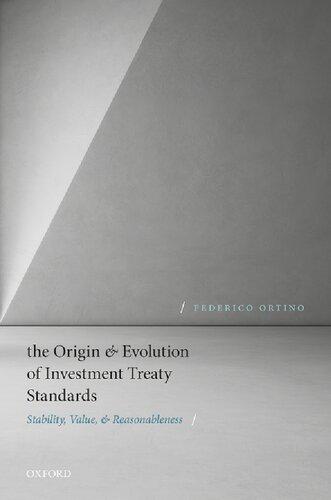
The Origin and Evolution of Investment Treaty
Standards: Stability, Value, and Reasonableness Federico Ortino
https://ebookmass.com/product/the-origin-and-evolution-ofinvestment-treaty-standards-stability-value-and-reasonablenessfederico-ortino/

Development Economics

Hierarchy of Needs and the Measurement of Poverty and Standards of Living
Joseph Deutsch and Jacques Silber

ElementsinDevelopmentEconomics
SeriesEditor-in-Chief
KunalSen
UNU-WIDERandUniversityofManchester
HIERARCHYOFNEEDS ANDTHEMEASUREMENT
OFPOVERTYAND STANDARDSOFLIVING
JosephDeutsch
Bar-IlanUniversityandAshkelonAcademicCollege
JacquesSilber Bar-IlanUniversity



ShaftesburyRoad,CambridgeCB28EA,UnitedKingdom OneLibertyPlaza,20thFloor,NewYork,NY10006,USA 477WilliamstownRoad,PortMelbourne,VIC3207,Australia
314–321,3rdFloor,Plot3,SplendorForum,JasolaDistrictCentre, NewDelhi – 110025,India
103PenangRoad,#05–06/07,VisioncrestCommercial,Singapore238467
CambridgeUniversityPressispartofCambridgeUniversityPress&Assessment, adepartmentoftheUniversityofCambridge.
WesharetheUniversity’smissiontocontributetosocietythroughthepursuitof education,learningandresearchatthehighestinternationallevelsofexcellence.
www.cambridge.org Informationonthistitle: www.cambridge.org/9781009485975
DOI: 10.1017/9781009358200
©UNU-WIDER2024
Thispublicationisincopyright.Subjecttostatutoryexceptionandtotheprovisions ofrelevantcollectivelicensingagreements,withtheexceptionoftheCreative Commonsversionthelinkforwhichisprovidedbelow,noreproductionofanypartmay takeplacewithoutthewrittenpermissionofCambridgeUniversityPress&Assessment.
Anonlineversionofthisworkispublishedat doi.org/10.1017/9781009358200 under aCreativeCommonsOpenAccesslicenseCC-BY-NC-SA3.0IGOwhichpermits re-use,distributionandreproductioninanymediumfornon-commercialpurposes providingappropriatecredittotheoriginalworkisgiven,anychangesmadeare indicated,andthenewworkispublishedunderthesamelicenceterms.Whenthe licensorisanintergovernmentalorganisation,disputeswillberesolvedbymediation andarbitrationwherepossible.Toviewacopyofthislicense,visit https://creativecommons.org/licenses/by-nc-sa/3.0/igo
Whencitingthiswork,pleaseincludeareferencetotheDOI 10.1017/9781009358200
Firstpublished2024
AcataloguerecordforthispublicationisavailablefromtheBritishLibrary.
ISBN978-1-009-48597-5Hardback
ISBN978-1-009-35817-0Paperback
ISSN2755-1601(online)
ISSN2755-1598(print)
Additionalresourcesforthispublicationat www.cambridge.org/deutsch-silber CambridgeUniversityPress&Assessmenthasnoresponsibilityforthepersistence oraccuracyofURLsforexternalorthird-partyinternetwebsitesreferredtointhis publicationanddoesnotguaranteethatanycontentonsuchwebsitesis,orwill remain,accurateorappropriate.
ElementsinDevelopmentEconomics
DOI:10.1017/9781009358200
Firstpublishedonline:February2024
JosephDeutsch
Bar-IlanUniversityandAshkelonAcademicCollege
JacquesSilber
Bar-IlanUniversity
Authorforcorrespondence: JacquesSilber, jsilber_2000@yahoo.com
Abstract: ThefocusofthisElementisontheideathatchoiceis hierarchicalsothatthereexistsanorderofacquisitionofdurablegoods andassetsasrealincomesincrease.Twomainapproachestoderiving suchanorderarepresented,theso-calledParoushapproachandItem ResponseTheory.Anempiricalillustrationfollows,basedonthe2019 EurobarometerSurvey.TheElementendswithtwosectionsshowing, first,howmeasuresofinequality,poverty,andwelfaremaybederived fromsuchanorderofacquisitionand,second,thatthereisalsoanorder ofcurtailmentofexpenditureswhenindividualsface financialdifficulties. ThistitleisalsoavailableasOpenAccessonCambridgeCore.
Keywords: consumptionexpenditures,durablegoods,Eurobarometer, hierarchicalchoice,inequality,ItemResponseTheory,orderofacquisition, orderofcurtailment,Paroushapproach,poverty,welfare
©UNU-WIDER2024
ISBNs:9781009485975(HB),9781009358170(PB),9781009358200(OC) ISSNs:2755-1601(online),2755-1598(print)
AnonlineAppendixforthispublicationcanbeaccessed at www.cambridge.org/deutsch-silber
1Introduction
Formosteconomistsanimportantassumptionunderlyingthenotionofrational behavioristhateconomicagentscomparebundlesofgoodsbyreducing everythingtoacommondenominator,calledutility.Forexample,standard consumertheoryassumesthatthelossofsomeunitsofagivencommodityin onebundlecanbecompensatedbythegainofsomeunitsofanothercommodity.Someeconomistshave,however,questionedsuchanassumptionand adoptedthenotionofhierarchicalpreferences.Asstressedby Drakopoulos (2004),althoughtheconceptofhierarchicalpreferencesleadstoareasonable systemofchoice,mosteconomistsrejectedsuchanapproachbecausethey focusedtheirattentiononthenotionoflexicographicordering,which,asis well-known,violatestheaxiomofcontinuityand,thus,intheeyesofthese economists,cannothaveawideapplicationwhenappliedtoeconomicissues. Theycitehereanargumentemphasizedby Debreu(1959),accordingtowhich lexicographicorderingsproducenonconvexitiesanddiscontinuities,andthese shortcomingstendtopreventtheexistenceofageneralequilibrium.
Pasinettiisoneofthoserareeconomistswhoarguedinfavorofhierarchical preferencesashewrote: “Althoughpossibilitiesofsubstitutionamongcommoditiesareofcourserelevantatanygivenlevelofrealincome,thereexists ahierarchyofneeds.Moreprecisely,thereexistsaverydefiniteorderofpriority inconsumers’ wants,andthereforeamonggroupsofgoodsandservices,which manifestsitselfasrealincomesincrease” (Pasinetti,1981,p.7,citedby Lavoie, 1994).
Lavoie(1994),infact,arguesthatmosteconomistsputtoomuchemphasison substitutioneffectsandtendtoneglectincomeeffects.Hecitesthefamous textbookof DeatonandMuellbauer(1980,p.71),whoconcludedthat,when workingwithgeneralcategoriesofconsumptionexpenditures,own-priceand cross-elasticitiesareverysmall(nothigherthan0.5inabsolutevalueforthe own-priceelasticitiesofcategoriessuchas,forexample,food,travel,and entertainment).TheexplanationLavoieprovidesforsuch findingsisthat theselargecategoriesofexpendituresarederivedfromneedsthatcannotbe substituted.Therefore,variationsinthepriceindexoftheselargecategorieswill notleadtoimportantchangesinconsumptionpatterns.Onecanexpect,however,thatsubstitutioneffectsmaybemoresubstantialwithineachofthese consumptioncategories,althoughsomeempirical findingsof Houthakkerand Taylor(1970) seemtoindicatethateveninsuchacaseprice-elasticitiesarenot veryhigh.
Thisemphasisongroupsofgoodsappearedalreadyinthe1940sinan importantarticleoftheFrencheconomistRené Roy(1943),whowrotethatit
ispossible “toestablishamongallthegoodsandservices,aclassificationinto groupssuchthatanyconsumerhasaccesstoagroupofacertainorderonlyafter havingensuredthesatietyoftheneedsrespondingtothegroupsoflower category.”1 ThenoveltyofRoy’sapproachisthat,lookingatnecessities,he dividestheconsumersofthesegoodsintotwogroups:whereasthe firstonedid notreachsatiety,thesecondonedid.Hethenderivesthelawofdemandas afunctionofthedistributionofincomes,aswillbeshownin Section2.
In Section2 wediscussthenotionofhierarchicalchoiceasitappearedinthe economicsliterature.SpecialemphasisisputonthecontributionofRoywhois wellknownforwhatiscalledRoy’sidentity(Roy,1947)whichenablesoneto derivetheordinarydemandcurve(notthecompensatedone)onceweknowthe indirectutilityfunction.However,Roy,accordingto Allais(1988),made anotherimportantcontribution,which Schultz(1938) consideredasfundamental,namelyhisanalysisoftherelationshipbetweenthelawsofdemandand Pareto’s(1895) lawofincomedistribution.
In section3 weapplythisnotionofhierarchicalchoicetotheideaofanorder ofacquisitionofdurablegoodsandassets.Thisnotionwasoriginallyintroducedby Paroush(1965),followingpreviousworkby Guttman(1944).This sectionwillthereforedescribethemethodologysuggestedbyParoush.Itwill thenpresentanalternativeapproachtoderivingtheorderofacquisitionof durablegoods,namelyItemResponseTheory.Thelatterapproach,though originallyappearinginthepsychometricliterature,turnsouttobealsorelevant to findthemostcommonorderofacquisitionofdurablegoodsorassets.The sectionendswithasummaryoftheso-calledBordaapproachandofacount approachderivedfromthestructureoftheownershipofdurablesorassets.
Section4 isdevotedtoempiricalapplications.Usingthe2019Eurobarometer Surveywe firstapplytheapproachofParoushtothisdatabaseandderivethe mostcommonorderofacquisitionofdurablegoodsforeachofthethirty-five countriesforwhichdatawereavailable.Wethendoasimilaranalysisusing ItemResponseTheoryandexaminetowhatextenttheordersofacquisition obtainedwitheachapproacharesimilar.Wealsocheckwhethertherank
1 Ourtranslation.BorninParisonMay21,1894,RenéRoywasadmittedtotheÉcole Polytechniquein1914.OnAugust15ofthesameyearhehadtojointhearmyandhewas seriouslyinjuredonApril14,1917,duringtheattackontheChemindesDames:hecompletely losthissight.Hewasonlytwenty-three ... However,thankstohisstrongwillhe finallymanaged tocalmlyaccepttheunacceptableandtopursue,forsixtyyears,acareerasanengineeraswellas economist .RenéRoy’sabilitytoanalyzeverydifficultquestionsandtokeepconstantlyupto datewiththemainpublicationsofhistimewasquiteadmirableinviewofhisblindness.RenéRoy hasshownwhatunyieldingenergycombinedwithremarkableintelligencecangive,inthefaceof irremediableadversity(translatedbyusfrom Allais,1988)
correlationbetweentheordersofacquisitionobservedintwocountriesis relatedtothegapintheirpercapitaGDP.
In Section5 wederivemeasuresofinequality,povertyandwelfarefromthe informationobtainedontheorderofacquisitionofdurablegoodandassetsin eachcountry.We firstgiveatheoreticalbackgroundwhichexplainshowitis possibletomeasureinequality,poverty,andwelfarewhenonlyordinalvariablesareavailable,whichisthecaseofthedataweanalyze.Thenwepresent empiricalillustrationsthatallowustoestimateforeachcountry,usingthe ordersofacquisitionderivedintheprevioussection,theextentofinequality, poverty,andwelfare.
Finallyin Section6 weapplytheapproachofParoushandItemResponse Theorytoanothertypeofdataset,namelytheSocialSurveythatwasconducted inIsraelin2013.ThisisthemostrecentIsraelisocialsurveywhererespondents wereaskedwhethertheyhadtocurtailtheirexpendituresbecauseof financial difficulties,andiftheydid,whichexpenditurestheyreducedoreliminated.In otherwords,thefocusofthissectionisontheorderofcurtailmentofexpenditures,anditshouldbeclearthatwiththistypeofinformationitisalsopossible toapplytheapproachofParoushorItemResponseTheory.
Concludingcommentsare finallygivenin Section7
2EconomicsandHierarchicalChoice
Weconsideritessentialtolinkthephenomenaofconsumptionandconsequentlyof demandtotheconceptofhierarchyofneeds.(Roy,1943)
2.1Introduction
Thenotionofahierarchyofneedsorwantsisanoldone.Platoinhisfamous Republicalreadywrote2 that “the firstandthegreatestofourneedsisthe provisionoffoodtosupportexistenceandlife Thesecondtheprovisionof adwellingplace,andthethirdofclothing ... . ” Muchlateron,asstressedby Drakopoulos(2004),severaleconomistssuchasSmith,Say,Jevons,Menger, andMarshall,werealsoawareoftheimportanceofmakingadistinction betweenbasicandnonbasicneeds.Someofthemevenproposedasystemof choicebasedonthisidea.However,thefactthatincorporatinghierarchyinto theformalisticmethodologyofthemarginalistswasnotaneasytask,explains probablywhysuchahierarchicalapproachtodecisionmaking,didnotbecome verypopular.
2 Thiscitationappearsin Drakopoulos(2004).
Thegoalofthissectionistotakeacloserlookatthisnotionofhierarchyof needsandatitsimplications.Afterbrieflyreviewingthewaysomefamous economistsunderstoodtheideaofhierarchyofneeds,welookatthenotionof wantswhichforsomeeconomistsisderivedfromthatofneedswhileothersdo notreallymakeadistinctionbetweenthesetwonotions.Particularattentionis thengiventothewritingsofthequitefamousFrencheconomistRenéRoy whosearticlesontheconceptofhierarchyofneedsareunfortunatelynotvery wellknownbecausetheywerepublishedinFrench.ForRoythenotionof hierarchyofneedsappliestobroadlydefinedcategoriesofgoodswhilesubstitutionbetweengoodstakeplacewithineachofthesecategorieswhenrelative priceschange.Thelastsections(Sections2.6, 2.7,and 2.8)aredevotedtothe implicationsoftheconceptofhierarchicalchoicefortheshapeofEngelcurves, thedistributionofwealthandpovertyandthediversityofexpenditures.
2.2TheNotionofNeeds
Thenotionofneedhasexistedforalongtime.Smith,forexample,explainsin the WealthofNations (pp.869–70)whathemeansby “necessaries”:
BynecessariesIunderstand,notonlythecommoditieswhichareindispensablynecessaryforthesupportoflife,butwhateverthecustomofthecountry rendersitindecentforcreditablepeople,evenofthelowestorder,tobe without.Alinenshirt,forexample,is,strictlyspeaking,notanecessaryof life.TheGreeksandRomanslived,Isuppose,verycomfortably,thoughthey hadnolinen.Butinthepresenttimes,throughthegreaterpartofEurope, acreditableday-labourerwouldbeashamedtoappearinpublick3 without alinenshirt,thewantofwhichwouldbesupposedtodenotethatdisgraceful degreeofpoverty,which,itispresumed,nobodycanwellfallintowithout extremebadconduct.Custom,inthesamemanner,hasrenderedleathershoes anecessaryoflifeinEngland.Thepoorestcreditablepersonofeithersex wouldbeashamedtoappearinpublickwithoutthem.
Almostonehundredyearslater,asmentionedby Becchio(2014),inthe first editionofhis PrinciplesofEconomics (1871,1981),CarlMengerstressedthe factthattherearefourprerequisitesforagoodtobeaneconomicgood: “the presenceofahumanneed;somepropertiesabletorenderathingcapableof beingbroughtintoacausalconnectionwiththesatisfactionofthisneed;the humanknowledgeofthiscausalconnection;acommandofthethingsufficient todirectittothesatisfactionoftheneed” (Becchio,2014).Menger ’sviews imply firstthattheexistenceofahumanneedisonlyanecessaryconditionbut notasufficientoneforathingtobecomeagood.Asstressedby Ruprecht
3 Thespelling “publick” istheonewhichappearsintheoriginalworkofAdamSmithandthisis whywekeptthisspellinganddidnotwrite “public.”
(2007)thissuggeststhattheexistenceofanobjectivecause–effectrelationship isanecessaryconditionforathingtobecomeagood.Inaddition,anindividual consumermustbeawareofthisrelationship.Ruprechtgivesasillustrationthe discoveryoftheimpactofcitrusfruitsonscurvyprevention.Citrusfruitshad beenknownforalongtimefortheircaloriccontent,theirjuiciness,theirtaste, buttheconnectionwiththepreventionofscurvywassomethingnewofwhich peoplebecameawareonlyaroundthemiddleoftheseventeenthcentury. Clearlytheobjectiveimpactofcitrusfruitconsumptiononthepreventionof scurvydoesnotimplythatconsumersareawareofthiseffect.Ruprecht, however,challengesMenger ’s(1953)view,accordingtowhichtheobjective characterofthisrelationshipisanecessaryconditionforathingtobecome agood.Hecites Hayek(1979),forwhomsubjectivebeliefsmatterifwewantto explainhumanbehaviortowardthings.ForHayekwhatisrelevantisnotwhat canbefoundaboutthingsbytheobjectivemethodsofscience,butwhat apersonthinksaboutthem. “Knowledge,whichwemayhappentopossess aboutthetruenatureofthematerialthing,butwhichthepeoplewhoseactionwe wanttoexplaindonotpossess,” isnotrelevanttoexplaintheactionsof individuals.Ruprechtthenaskshowpeopleshouldtakeadecisionwhen consumersfacecompetingcause–effecthypotheses.Following Popper(1959) hearguesthat “non-falsification” maybeaplausiblecriterion.Butwhathappenswhenconsumersneedtochoosebetweenseveralhypothesesthathavenot yetbeenfalsifiedbutthereisnowayoftestingthem?Insuchacaseconsumers willhavetodecidewhichhypothesistheytrustandwhetherthereisacase strongenoughforthemtoact.
AsfarasthefourthconditionmentionedbyMengerisconcerned(“acommandofthethingsufficienttodirectittothesatisfactionoftheneed”),one couldhavethoughtthatincomeisapreconditionforgetting “personalcommand” ofsomething.Buttheconceptof “positionalgoods,” introducedby Hirsch(1976),showsthatconsumersacquirewantsviatheirconsumption experiencesaswellaswhenobservingtheconsumptionofotherpeople. Ruprechtmentionsthentheconceptof “emulativeconsumption” stressed,for example,by Bourdieu(1984),abehavioroftensummarizedbytheexpression “keeping-up-with-the-Joneses.” InshortRuprechtconcludesthatsocialimitationprovidesastrongargumentagainstgiving “personalcommand” thestatus ofanecessaryconditionforathingtobecomeagood.
Infact, Becchio(2014) hasarguedthatinthesecondeditionof Menger ’s Principles(1923),Menger ’sviewsweresomewhatdifferentashethenemphasizedthenotionofsocialneedsandsocialgoods.Asmentionedby Yamamori (2020),thesecondeditionof Menger ’sGrundsätze(1923)hadanew first chapterwhosetitlewas “theoryofneeds.” InthischapterMengerwrotethat
“thestartingpointforanyinvestigationofeconomictheoryisneedyhuman nature.Withoutneeds,therewouldbenoeconomy,nonationaleconomy,no economicscience” (Menger,1923,citedby Yamamori,2020).Yamamorialso stressedthatMengermakesadistinctionbetweenneed(“Bedürfnis” in German)and “itssatisfier-provisions” (“Bedarf” inGerman),whichisdefined as “thequantitiesofconsumptiongoodsapersonmusthavetosatisfyhis needs.” Theformernotionisconsideredassubjective,thesecondasobjective.
AtthesametimeasCarlMengerpublishedthe firsteditionofhisPrinciples, Stanley Jevons(1871) publishedhis TheoryofPoliticalEconomy.Bothauthors tookasubjectiveapproachtothetheoryofvalue,atthedifferenceofthe objectiveapproachofclassicaleconomists.Jevons’sanalysisisbasedonthe conceptofutility,whileMengerusestheword “satisfaction.” Asmentionedby Lagueux(1997),forJevons,utilityis “theabstractqualitywherebyanobject servesourpurposesandbecomesentitledtorankacommodity” (Jevons,p.38), whileforMenger,satisfactiondescribesasubjectivestateofmind.Menger refers “todegreesofsatisfactioninrelationtovariousneedswhichareconsideredanddrawscomparisonsonlybetweenthesedifferentdegreesofsatisfaction” (Lagueux,1997).
Notethatinhisessayon “Economicpossibilitiesforourgrandchildren,” Keynes(1933,pp.833–41)consideredthattherearetwotypesofneeds: absoluteandrelative.Whileabsoluteneedsaresatiable,relativeneedsarenot because “theysatisfythedesireforsuperiority” (Keynes,1933).
2.3FromNeedstoWants
Needshavetobecarefullydistinguishedfromwants.Asstressedby Lutzand Lux(1979) needscanbehierarchicallyclassifiedanddetermineconsumers’ behavior.Wantsarederivedfromneedsandmaybesubstitutedforeachother. Theyreflect “thevariouspreferenceswithinacommoncategoryorlevelof need” (LutzandLux,1979).
For Drakopoulos(1994) aneedimpliessomethingwhichisuniversally necessary,whileawantreferstoapersonalpreferenceandthelatterisatrait oftheindividual.Thisdifferenceexplainswhytheremaybeanimportant degreeofsubstitutionbetweenwants,whilethereislikelytobeonlyaweak degreeofsubstitutionbetweenneeds,whichareassumedtobeuniversal.Such aviewechoesthatof CosmidesandTooby(1994),whoarguethatcultural differencesarevastlyoverstated, “becausebeneathexistingsurfacevariability allhumanssharethesamesetofpreference-generatinganddecision-making devices.” Suchastatementisderivedfromanevolutionarypsychology approachtohumanbehavior.For CosmidesandTooby(1994) “natural
selection’sinvisiblehandcreatedthestructureofthehumanmind,andthe interactionofthesemindsiswhatgeneratestheinvisiblehandofeconomics.” Theseauthorsalsostressthatevolutionarypsychologycanprovidealistof humanuniversalpreferences,andofthe “proceduresbywhichadditional preferencesareacquiredorreordered.” Suchanapproachwouldwidenthe scopeofpreferencesandnotlimitthelattertogoodsandservices. EarlandPotts (2004) havethusproposedadistinctionbetweenhigh-andlow-levelpreferences.High-levelpreferencesareinnate,whilelow-levelpreferencesreferto specificpreferencesthatareacquiredbylearningandspecialization.Such adistinctionbetweenhigh-andlow-levelpreferencesisaconsequenceof human’s “boundedrationality.” Consumers “haveaproblemofknowingwhat theywantandhowtogetit” (EarlandPotts,2004).Whilehigh-levelpreferencesdefineinawaytheproblemsthatmustbesolved,low-levelpreferences havetobeacquiredeitherbylearningorviaagentsthatEarlandPottscall “preferenceentrepreneurs,” whoareabletoadaptproductstolifestyles.
Anotherinterestingapproachisthatof Witt(2001),whoaskedwhatwants peoplepursueintheirdailyeconomicactivities,wantstheysatisfybyconsumingresourcesasdirectinputsorastoolsforservingthesewants.Witt’smain argumentisthatthereisabiologicalfoundationofcertain “basicneeds” (e.g. thirst,hunger,sex)andtheyare fixedanduniversallyshared.Biologicalevolutionrequiresorganismstoconsumecertainthingstosurviveandthisexplains why,amongtheverypoor,everyonespendsmostofhis/hermoneyconsuming food.Oncethebasicneedsaresatisfied,consumersmoveontosatisfyother needsthatmaybe “learnt.” HereWittmakesadistinctionbetweencognitiveand noncognitivelearning.Thelatterconcernsacquiredwantsthatemergeas consumers “formassociationsbetweentheseexperiencesandthematerial environmentwhichsurroundsthem.”4 Cognitivelearning,onthecontrary, referstoakindofproblem-solvingsequencewhereconsumerstryto findnew solutionstoagivenproblem.
2.4OntheNotionofHierarchicalChoice
Thisnotionofhierarchyhasbeenstressedby Drakopoulos(1994),whopresents asurveyofhierarchicalchoiceineconomics.Hestartsbyremindingusthatthis isanoldideasincePlato,asindicatedatthebeginningofthissection,had ahierarchicalviewofneeds.Drakopoulosthenemphasizedthefactthatthe notionofhierarchicalchoiceappearsinawayoranotherintheworksof Jevons
4 Chai(2017) givesherethecaseofconsumerswhoif “repeatedlyexposedtoacertaintypeofbed sheetwhentheysleepmayacquirealikingforsuchbedsheetsthatexistsindependentlyofhow tiredtheyare.”
(1871, 1957), Marshall(1949), Menger(1871, 1981)butalso Fishburn(1974), Little(1950) andmanyothereconomists.Herearesomeinterestingcitations.
Georgescu-Roegen(1966),forexample,wrote:
Ithaslongsincebeenobservedthathumanneedsandwantsarehierarchized Satisfactionsofconcreteneedshavedifferentdegreesofimportancetous Despitethefactthatthewantpatterndiffersfromoneindividualtoanother, mostofthesepatternshaveagreatdealincommon.(1)Thehierarchyof wantsseemstobeforallmenidenticaluptoacertainrank.Onemaybe almostsurethatthisrefersatleasttothirst,hunger,leisure,shelter.(2) Individualsbelongingtothesameculturearelikelytohaveincommonstill agreaternumberofwantsatthetopofthehierarchythanthosecommontoall men.
Thisisthereasonwhy choiceaimsatsatisfyingthegreatestnumberofwants,startingwiththemost importantandgoingdowntheirhierarchy.Therefore,choiceisdeterminedby theleastimportantwantthatcouldbereached .Nomatterwhatwechoose, houses,cars,orcombinationsofcommodities,theprocedureisthesame. Betweentwocombinationsthechoicewillbemadeaccordingtothelowest relevantwantthatcanbereflectedinanyofthetwocombinations.
Robinson(1956,p.354,citedby Lavoie,1994)arguesthat, “generallyspeaking,wantsstandinahierarchy(thoughwithconsiderableoverlapsateach level),andanincrementinafamily’srealincomeisnotdevotedtobuying alittlemoreofeverythingatthesamelevelbuttosteppingdownthehierarchy.”
For Pasinetti(1981,p.73,citedby Lavoie,1994),althoughpossibilitiesof substitutionamongcommoditiesare,ofcourse,relevantatanygivenlevelof realincome,thereexistsahierarchyofneeds.Moreprecisely,thereexistsavery definite orderofpriority inconsumers’ wants,andthereforeamonggroupsof goodsandservices,whichmanifestsitselfasrealincomesincrease.”
Eichner(1986,pp.159–60,citedby Lavoie,1994)believesthat “inan economythatisexpandingovertime,itistheincomeeffectthatwillpredominateovertherelativeprice,orsubstitutioneffects Substitutioncantakeplace onlywithinfairlynarrowsubcategories.Consumers’ preferencesare,inthis sense,lexicographicallyordered ”
Asemphasizedby Lavoie(1994),forthoseeconomists,liketheso-called “post-Keynesianeconomists,” forwhomahierarchyofneedsexists,householdswhoseincomesarerelativelysimilarwillsatisfytheirneedsinmoreor lessthesameorder.Thisissobecauseofconvention.Inotherwords,once physiologicalneedsarefulfilled,therewillstillbeacommonhierarchyofneeds forindividualswhoshareasimilarculture.Consumerstendtoconformtothe
normsofreferencegroupsandtheytendtoimitatethebehaviorofthosewhoare higherinthehierarchyofsociety.Thisideathattherelativepositionof consumersinsocietymattersverymuchisnotnew,asitwasalreadyraised by Duesenberry(1949), Leibenstein(1950) and Veblen(1931)
2.5HierarchyofNeedsandtheApproachofRenéRoy
TheFrencheconomistRenéRoy,famousforintroducingwhatisknownas Roy’sidentity(Roy,1947),introducedthenotionofgroupofgoodsand assumedtheexistenceofahierarchyofgoods(Roy,1930, 1931, 1933, 1943). Morepreciselyhemadeadistinctionbetweenwhathecalls “inferiorand superiorgroups.” Inhiswords5 (Roy,1931):
Undertheseconditions,everyonewillobtainthequantityofgoodsnecessary tosatisfytheneedscorrespondingtothelowergroupsoftheclassification,to devotethesurplustotheproductsrankedinthehighergroups.Ourreasoning isthereforebasedonthenotionofsatiety,itselfderivingfromtheprincipleof decreasingutility.Moreover,weassumethattheamountofincomespenton meetingtheneedsofacertaingroupisthesameforeveryindividual,and thereforedoesnotdependonthevalueoftheincome.Thisisahypothesis whichmayseemparadoxical,butwhichisneverthelessjustifiedbythe followingconsiderations:
1)Forfairlylargeincomes,theshareallocatedtotheacquisitionofobjects belongingtothelowercategoriesofneedsrepresentsonlyaverysmall fractionoftheindividualincome.
2)IfwerefertothepreviouslymentionedParetoformula,wecaneasilysee thatthenumberofpeoplewithanincomegreaterthanagivenvalue decreasesveryrapidlywhenthisvalueincreases.
Aswillbeseen,Roymakesalinkbetweenthedistributionofincomesandthe generalexpressionofthelawofdemand.Asfarastheallocationofone’s incomebetweenthevariousgoodsisconcerned, Roy(1930,p.115)writes:
Whatevertheimportanceoftheincome,thereexists,foreachindividual, acertainorderofpriorityrelativetotheallocationofhisresourcestoeach typeofarticle.Thisclassificationinindividualneedscouldbehighlightedby amethodanalogoustothatwhichwasusedby Dupuit(1844) forthe appreciationoftheutilityofthevariousgoods;itwouldbeenough,assuming thatallpricesremainconstant,toimaginethattheincomeoftheindividualin questiondecreasesprogressively,insuchawaythatheisobligedtogradually eliminatethearticleswhichheconsiderstheleastindispensable.
5 Roypublishedseveralarticlesin Econometrica,alloftheminFrench.Tothebestofour knowledgethesearticles,atleastmostofthem,havenotbeentranslatedinEnglishandhence werecitedveryseldom.Thisiswhywecitehimatlengthinthissection.Thetranslationisours.
Forallthepeoplebelongingtothecommunitystudied,theclassification wouldobviouslynotbethesameforallindividuals,becauseofdifferencesin taste,butonecanimaginethepossibilityofforminggroupsofitemssuch that,forallindividuals,theorderofpriorityisobservable,notfromoneitem toanother,butfromonegrouptotheother
Thecategoriesinquestionwouldultimatelyreflectthehierarchyofneeds, whilewithinthesecategories,theselectionofitemswouldbemadeaccording toindividualtastes;wethereforemakeadistinctionbetweenneedsandtastes.
Roy(1930) thenderivesthefollowingresultconcerningthepriceelasticityof thedemandfornecessities.
Let P and Q refertoapriceandquantityindexofthegoodsofagivengroup and pi and qi tothepriceandquantityofgood i whichbelongstothisgroup.We maythereforewritethat
¼ k Xi pi qi
where k isaconstant.Let P0 and Q0 refertothevalueofthepriceandquantity indicesatsomeoriginaltime0.
Roythendefinesas r0 thelowerlimitofindividualincomes.Healsodefines (Roy,1930,pp.121–2)as ql “themaximumvalueofthequantityindexforeach individual.” Hethenwrites:
wehavepreviouslyadmittedthatthislimitensuringsatietyforthegroupof productsstudiedwasthesameforeachindividualandthatitdidnotdependin particularontheamountofindividualincome.Thislimit ql issuchthatifthe priceindexcorrespondingtothegroupstudiedisequalto P,theindividual incomeensuringsatietyisrepresentedbytheproduct ql P
Toarriveatthelawofdemandforbasicnecessities,wewillobservethat thesetofpaymentsQ.Prelatingtothiscategoryofobjects,canbedivided intotwogroups:
a)Thegroupofpeoplewhoseindividualconsumptionisimperfectand thereforeremainsbelowthe ql limit.
b)Thegroupofconsumerswhoseindividualincomeissufficienttoallow thepurchaseofthequantitylimit ql
Forthe firstgroup,thatis,forindividualswhoseincomeisbetweenthelower limit r0 andtheincome Pql enablingthemtoacquirethequantity-limit ql ,the totalincomeisallocatedtotheacquisitionofobjectsbelongingtothegroup studied,sincetheyare,byhypothesis,objectsof firstnecessity.
Thesetofpaymentsforthisgroupofgoodswillhencebeexpressedas ð Pql
r0 rnrðÞdr where r referstoincomeand nrðÞ tothenumberofindividuals
withanincome r
Forthesecondcategoryofindividuals,thosewhoseincomeallowssatiety,allthepaymentscorrespondingtobasicnecessitiesareequaltothe productofindividualincome Pql bythenumberofpeoplewhoseincomeis higherthanthisamount;thesetofpaymentsinquestionisthereforerepresentedbytheexpression Pql ð ∞ Pql nrðÞdr Wemaythereforewritethat PQ ¼ ð Pql r0 rnrðÞdr þ Pql ð ∞ Pql nrðÞdr:
Roy(1930,pp.127–8)thenderives PQ withrespecttotheprice,andthis derivative,usingthesecondmemberof PQ,isequalto ql ð ∞ Pql nrðÞdr = Qs where Qs referstothetotalconsumptionofthosepeoplewhoseincomeis greaterthan Pql ,thatis,tothetotalconsumptionofthosewhoareabletoensure satietyfortheproductsconsidered.
Roy(1930) thenconcludesthat
λ ¼ Q Qs Q mayhencebeconsideredasthepriceelasticityofthe “necessities.” Itisestimatedastheratiooftheconsumptionofnecessitiesofthosewhodonot reachsatietyoverthetotalconsumptionofnecessitiesinsociety.Thisprice elasticitywillhencebelower,thehigherthepercentageofindividualswho reachsatiety,asfarasnecessitiesareconcerned.
Itisinterestingtonotethat Lavoie(1994),referringtotheworkof Deatonand Muellbauer(1980),concludedthat “thosewhohaveattemptedtoestimatethe importanceofpuresubstitutioneffectsonthegeneralcategoriesofconsumptionexpenditures,afterhavingtakenintoconsiderationtheincomeeffects throughtime,havediscoveredthatthesesubstitutioneffects,own-priceelasticitiesandcross-elasticities,arequitenegligible.” Lavoie(1994) addedthat “the findingsof HouthakkerandTaylor(1970) showthatevenatamuchmore
disaggregatedlevel,thatis,withovereightycategoriesofconsumergoods, consumptionexpendituresaremainlydeterminedbyhabitsandincomeeffects, whilepricesubstitutioneffectsplayafairlymodestrole.”
Inanotherpaper Roy(1943) repeatedhisbeliefinthenotionofhierarchyof needs.Hereiswhathewrote:
Withregardespeciallytothephenomenaofconsumption,we finallythink thatthenotionofurgencyinthesatisfactionofhumanneedstendstocreate ascaleofconsumergoodswhichcanthusbeclassifiedintogroups,whilethe notionoftastemanifestsitselfwithineachgroupby fixingthechoiceofeach consumeronthearticlescorrespondingtohispersonalpreferences.Within thesegroups,thephenomenaofcomplementarityorsubstitutionalsoappear, whichthuscontributeto fixingthedemandsofconsumersforthevarious articlesconsideredseparately ....(Roy,1943,p.14)
Wehaveimplicitlyassumedthatpricesaregivenbecause,theoretically,the orderofsuccessionofgoodsforaconsumerdependsontherelativevaluesof prices.Butthepricevariationsdonotaffect,inourview,thegeneralarrangementofthescales,becausebytriggeringsubstitutionphenomenatheyonly movethescalesinsideeachgroupandonlymodifytheirrespectivepositions, withoutalteringtheclassificationofgroups.Thenotionofhierarchyofneeds andconsequentlyofcommoditiesisinfactgovernedbymotivesof aphysiological,moralorpsychologicalorder,indifferenttoalargeextentto thepricemovementsthatoneobservesinpractice.(Roy,1943,p.16)
Giventheassumptionmadeabouttheallocationofincome,anyprice variationconcerningagroupofrank i willhavenoinfluenceonthedemand ofthegroupsoflowerorder,whileitwillhaveanimpact,notonlyonthe demandforgroup i butonthoseofallgroupsofhigherorder.Wecanalso expressthisfactbysayingthatpricevariationsforluxuryitemshaveno influenceonthedemandforbasicnecessitiesoronthatofproductsthat simplyprovideadegreeofcomfortthatcannotbeassimilatedtoluxury.Ifwe wanttoconcretizeourthoughtfurther,wecanstillsaythatvariationsinthe priceofchampagnewinewillnothaveaninfluenceontheconsumptionof tablewine,butthatconverselyavariationinthepriceoftablewinemay indeedactonthedemandforchampagnewine
Bylimitingourselvestotwogoods,breadandwineforexample,andby admittingthateachconsumerhasfreeaccesstoallthewaterheneeds,we cometothefollowingconclusion:
1)Everyconsumer firstallocateshisincometotheacquisitionofbread, untilheobtainsthesatietyofhisneedforfood,andforahomogeneous groupofconsumersthissatietyisobtainedforasubstantiallyconstant consumptionofbread,whoeveristheconsumer:
2)Oncesatietyhasbeenobtainedfortheneedforfood,everyconsumer allocatesthesurplusofhisincometotheacquisitionofwine.
3)Thedemandforbreadisindependentofthepriceofwine,butthedemand forwinedependsonthepriceofbread.(Roy,1943,p.20)
Thenotionofgroupsrestspreciselyonthehypothesisthatthedegreeof urgencyofthevariousneedsexperiencedbymenislinkedtotheirphysiologicalnature,totheirpsychologicalstate,tomores,ortotheorganizationof society,inaword,toawholesetoffactorsindependentofthepricelevel.Itis onlywithineachgroupthattherespectivelevelsofthevariousprices, combinedwithindividualtastes,directthedemandstowardsthisorthat article,bythemechanismofsubstitution.(Roy,1943,p.22)
2.6ImplicationsforEngelCurves
Oncechoiceisassumedtobehierarchical,thereare,asstressedby Drakopoulos (1994),implicationsconcerningtheshapeofdemandandEngelcurves.The notionthatforeachgoodthereissomesatietylevelofconsumptionwhichis supposednottobesurpassed,whatevertheindividual’sincome,hasbeen stressedinseveralempiricalanalyses. Prais(1952),forexample,suggested thatwhenselectingamathematicalformulafortheEngelcurve,oneshould makesurethatithassuchanasymptoticproperty.Anupperasymptoteis certainlydesirablefornecessitiesbut,asstressedby AitchisonandBrown (1954),itislessobviousforluxurygoods.They,however,arguethat “many commoditiesbeginlifeasluxuriesandeventuallybecomesemi-luxuriesor necessitiesasincreasingincomesandfallingpricesbringconsumersnearerto anultimatesaturationlevel.”
Inwhatisconsideredasthe firststatisticalanalysisofbudgets, Engel(1857, 1895)proposedthefollowinglawofconsumption(see Stigler,1954): “Thepoorer afamily,thegreatertheproportionofitstotalexpenditurethatmustbedevotedtothe provisionoffood.” Wright(1875) gavethenwhat Stigler(1954) labeledan “excessivefreetranslationofEngel’slaw” sinceWrightmentionedfourpropositions:
First,thegreatertheincome,thesmallertherelativepercentageofoutlayon subsistence.Second,thepercentageofoutlayonclothingisapproximately thesame,whatevertheincome.Third,thepercentageofoutlayforlodging,or rent,andforfuelandlight,isinvariablythesame,whatevertheincome. Fourth,astheincomeincreasesinamount,thepercentageofoutlayon “sundries” becomesgreater.
Stigler(1954) mentionsthat Schwabe(1868, 1966)addedthefollowinglaw: “Thepooreranyoneis,thegreatertheamountrelativetohisincomethathemust spendonhousing.” Wright(1875) alsosuggestedthefollowinggeneralization (see Stigler,1954): “Thehighertheincome,generallyspeaking,thegreaterthe saving,actuallyandproportionately.”
Engel,infact,seemstohaveborrowedanotionintroducedbySmithand accordingtowhich “theultimatemeasureofwelfareisthedegreetowhich individualsareabletosatisfywhatEngelcalled “Bedürdfnisse” andwhich Chai
andMoneta(2010) translatedas “wants.” Moreprecisely Engel(1895,p.1) wrotethat “everyindividualdirects(outofhisownimpulse)hishighestinterest tothecontinuoussatisfactionofthosewantsthatstemdirectlyfromhishuman nature,totheexpansionofthesewants,andalsototheattainmentofthe necessarymeanstosatisfythehigher,expandedwants.” Asstressedby Chai andMoneta(2010),Engel “shiftedthefocusofresearchawayfromexamining howexpenditureisdistributedacrossindividualgoodsconsumed,towards focusingonhowitisdistributedacrosswantswhichgoodsultimatelysatisfy. Second,Engelmadeaclearbreakfromthecommontendencyamongstclassical economiststoassumethatsome “basic” goodsareinherentlymoreimportantto humanwelfarethanother ‘luxury’ goods.”
Thisemphasisonwantsappearsclearlyinhisempiricalworksincehedidnot reallyfocushisattentiononfoodexpenditurebuton “nourishment” whichalso includedexpenditureonalcoholandtobacco.Accordingto ChaiandMoneta (2010),Engelbelievedthathisempiricalanalysisshowedthattherewas ahierarchyamongwants,themostimportantwantbeingthewantfornourishment.Thentherewasthewantforclothing,accommodation,heating,and lighting.Engelalsostressedthatwhenafamilyisnotabletosatisfyallits wants,itislikelytodecidenottosatisfy “higher-order” wantssothatitcan satisfyitsbasicwants.
Themostfamousapproachtotheideathatthereexistsahierarchyofneedsis certainlythatof Maslow(1970).The firstsetofneedthatheidentifiesisthatof basicneeds,whichincludeair,water,food,sleep,andsex.Thesecondgroupof needsreferstosafetyneeds,likefeelingsafeandsecureandsettled.Theseare morepsychologicalthanphysiologicalneeds.Thethirdsetofneedsis “belongingneeds,” whichconcernthedesiretobelongtofamilies,clubs,etc.As stressedby Clarke(2005) “thislevelofneedsincorporatestheneedtofeel (nonsexual)loveandacceptanceofothers.” Thefourthlevelofneedscovers self-esteemneeds,thatis,theneedtobeadmiredbythosearoundyou.Thelast levelofneedsislabeled “self-actualization, ” summarizedby Clarke(2005)as the “self-fulfillmentofones’ ownpotential,” althoughonemaywonderwhether suchawantisuniversallyshared.6
Afewpapershaveattemptedtotestthisnotionofhierarchyofneeds.Thus Hagerty(1999) adoptedMaslow’snotionofhierarchyofneedsaswellashis classificationinto fivecategoriesofneeds:physiological,safety,belongingand love,esteem,andself-actualization.Theindicatorsheusedforphysiological needswerethenumberofdailycaloriesavailableperpersonandthenGDPper capita.Forsafetyneedsheusedsafetyfromwar,safetyfrommurder,andhigh
6 WethankAndreasChaiforhavingdrawnourattentiontothispoint.
lifeexpectancy.Forbelongingandlovetheindicatorswerelowdivorcerateand lowchilddeathrate.Foresteemthemeasureswerepoliticalrightsandwomen’s participationinworkforpay.Finallyforself-actualizationtheindicatorsused weretertiary,secondary,andprimaryeducationenrollment.7 Datawereavailableforeighty-eightcountriesbetween1960and1994. Hagerty(1999) tested fourhypothesestoconfirmMaslow’stheory.First,thatnationsincreasingly fill theirneedsovertime.Second,anation’strajectoryofneedfulfillmentfollows anS-shapedpattern.Third,nations’ sequenceofneedfulfillmentfollows Maslow’ssequence.Fourth,highergrowthinoneneedareaiscorrelatedwith lowergrowthinotherneedareas.Theresultsindicatedthatthethree first hypothesesweregenerallyconfirmed,butnotthefourthone.
JacksonandMarks(1999) adopted Max-Neef ’s(1989, 1991)characterizationofhumanneedsandappliedittoananalysisofthepatternsofconsumer expenditureintheUnitedKingdombetween1954and1994.Both Maslow (1970) and Max-Neef(1991) characterizecertainneedsasmaterialneeds. Materialneedsaremainlysubsistenceandprotectionneeds.Moregenerally, satisfyingtheseneedsrequiresmaterials.Non-materialneedsaremoreabout processes(personal,social,andcultural)thanaboutobjects.Thus “participation,affection,understanding,idleness,creationandfreedomrelatemoreto individualandsocialpsychologythantheydotomaterialthings” (Jacksonand Marks,1999).Intheirempiricalanalysis,JacksonandMarksobservedthatthe increasebetween1954and1994inexpendituresrelatedtomaterialneeds satisfactionwas50percent,whiletheincreaserelatedtonon-materialneeds satisfactionwas160percent.Butthisincreaseinnonmaterialneedsappearsto bedominatedbyexpenditureonmaterialgoods(increaseingoodsanddurable goodsratherthaninservices)andthereforeremainsamaterial-intensiveformof consumption.
Clarke(2005)adoptedMaslow’sclassificationofneeds,whichmakes adistinctionbetweenbasicneeds(BN),safetyneeds(SN),belongingneeds (BIN),self-esteemneeds(SEN),andself-actualizationneeds(SA),toestimate well-being.Heassumedthatwell-being WB couldbeconsideredasselfactualization SA andexpresseditasthefollowingfunction:
WB ¼ SABN ; SN ; BIN ; SEN ðÞ
BN wasassumedtoincludetwoindicators:dailycaloriesavailableperperson andaccesstosafewater.For SN theindicatorswereinfantmortalityandlife expectancy,for BIN theyweretelephonemainlinesandfertilityrates,andfor
7 Thislinkbetweeneducationandself-actualizationisprobablyoversimplified,astherecertainlyis acomplexmapbetweenspendingandwants.WeagainthankAndreasChaiforhavingstressed thispoint.
SEN theindicatorswereadultilliteracyandunemployment.Clarkegave ahigherweighttohigherneedsanddecidedtogiveto BN ; SN ; BIN ; SEN the weights1,2,3,and4,respectively.Clarkealsousednormalizedindexesby dividingeachyear ’s figurebythehighest figureoccurringthroughoutthetime seriesheused.
ChaiandMoneta(2012) attemptedtotestEngel’sapproachtoahierarchy ofneeds.Engelhadmadeadistinctionbetweenthefollowingneeds (“Bedürfnisse”):nourishment,clothing,housing,heatingandlighting,tools forwork,intellectualeducation,publicsafety,healthandrecreation,andpersonalservice.ChaiandMonetausedtheUKFamilyexpendituresurveysforthe years1961,1970,1980,1990,and2000andallocatedthevarioushousehold expendituredatatotheneedcategoriesclassifiedbyEngelandmentioned previously.Theythenobservedthatbetween1960and1980theexpenditure sharesofthesevariousneedsforthelowest-incomedeciledidnotvaryvery much.After1980,expenditureonnourishmentdeclinedsignificantlywhile housingexpenditureincreasedsignificantly.Theyconcludedthattheirresults werequiteconsistentwithEngel’sobservedpatterns.Inparticular,thebudget sharesofhouseholdexpenditureonneedsthatEngelconsideredascentralto physicalsustenancedominatelow-incomeconsumptionpatternsinallyears examined.TheseauthorsalsoobservedthatEngelcurvesforlower-ordergoods haveshapesthataremoresimilartoeachotherthantotheshapesofEngel curvesforhigher-ordergoods,whileEngelcurvesforhigher-ordergoodshave shapesmoresimilartoeachotherthantoshapesofEngelcurvesforlower-order goods.ChaiandMonetaconcludedthat “ahierarchyofneedsappearstoconsist oftwolevelsinthatitisonlythemostimportantneeds,theneedfornourishment,thatappearstodominateoverotherneeds.Thereappearstoexistnoorder betweenotherlowerorderneeds.”
2.7ImplicationsConcerningtheDistribution ofWealthandPoverty
TheseimplicationshavebeenanalyzedinaveryinterestingwaybytheFrench engineerandeconomistDupuit(1859).Hereiswhathewrote:8
If,whentheinsufficiencyoftheharvestisatenth,everyonereducedtheir consumptionbyatenth,therewoulddoubtlessbedeprivation;however[ ]the sufferingwouldnowherebeveryacute;butthisisnotthewayofthings: howeverexpensivebreadmaybe,itisstill,fortherichandwell-to-doclasses, themosteconomicalfood,andforthemthehighpriceofbreadisneverareason toconsumeless.Therichorwell-to-dohouseholdthatspent400francsonbread
8 TheparagraphsbelowareatranslationofthecitationsofDupuitgivenin Simonin(2009).
willspendeightifthepricedoubles,buttheexpenditureonotheritemsinits budgetisreducedby400francs[...].
Ifhalfthepopulationconsumes,intimesofscarcity,thesamequantityof breadasintimesofplenty,thenallthedeprivationmustfallontheotherhalf.It isthennolongeraquestionofatenthbutofa fifth,and[ ]suchareductionin food[...]isdistributedinaveryunequalwayamongthelowerclasses, accordingtotheresourcesattheirdisposal,andafterwardsthisdeprivationof breadentailsmanyothers;because,tosatisfythisimperiousneedofhunger [ ]thepoormansellshisclothes,hisblankets,hismattresses,deprives himselfofwood,oflight,andthussufferingfromhunger,coldandhumidity, fallspreytodisease,and findsonlyindeaththeendofhissufferings[ ].Others [...]bydintofprivationsonsecondaryneeds,canwaitforbettertimes.Finally, inthewell-to-doclasses,notonlyistherenodeprivation,butthereisanincrease inconsumption.For,bytheveryfactthatthelowerclasseshavebeenobligedto restricttheirconsumptionrelativetocertainobjects,theseobjects,theproductionofwhichhasnotdiminished,areofferedtotherichclassesatalowerprice
Letusnotlosesightofthefactthatinthisphenomenonofthedistributionof wealth,wemustalwaysarriveattheresultthatconsumptionisequalto production.Nowwesupposethatthereisnodecreaseinproductionexcepton thearticleofcereals,anditisafact[...]thatintimesofscarcitythepoorclasses areobligedtorenounceanyotherexpensethanthatoftheirfood;itistherefore necessarythatinthesecircumstancestheotherclassesconsumewhatthepoor classeshavenotbeenabletoconsume.[ ]whichcompensatesfortheexcess expenditurewhichtheyhavetodotogetbread.
Wewillsay: first,thatscarcityisborneentirelybythepoorclassesofsociety, andeveninaveryunequalwaybetweenthem;second,thatforthepoorestthe deprivationoffoodiscomplicatedbyahostofotherdeprivations,[...];third thattheseprivationsaretheonlyonessufferedbytheslightlyhigherclasses; fourth,thatthewealthyclasses,farfromsupportingitofanykind,canconsume more.(Dupuit[1859],p.163–43)
ChaiandMoneta(2012) alsoanalyzedtheimplicationsofahierarchyof needsonthediversityofexpenditures.Theythusnotedthathouseholdslocated atlow-ormedium-incomedecilestendtodiversifytheirconsumptionpatterns.
2.8ImplicationsConcerningtheDiversityofExpenditures
Somewhatsimilarconclusionswerederivedby Chaietal.(2015).Usingdata fromthe2001cross-sectionoftheUKHouseholdExpenditureSurveyand gatheringinformationontheexpendituresofover5000householdsovertwelve differentcategories,theymeasureddiversityoverdifferentexpenditurelevels, usingvariousdiversitymeasures.Theyconcludedthat,atlow-incomelevels,
householdshaverelativelyconcentratedspendingpatternsbuttendtodiversify theirspendingquicklyastheirincomerises.Atthesametime,thelevelof heterogeneityinspendingdiversityalsogrowswithincome.
Chaietal.(2022) startedfromtheideathatatverylow-incomelevels householddemandismainlydedicatedtofood,whilericherhouseholdsconsumeamuchwidervarietyofgoods,higher-qualitygoods,andmoreservices. Economicgrowth,however,isoftenaccompaniedbyrisingincomeinequality. Therefore,ifoneassumeshierarchicalpreferences,greaterincomeinequality willraisethedistancebetweenconsumersacrossthespendinghierarchyand hencelowerthehomogeneityofconsumptionpatterns.Anotherreasonwhythe homogeneityofspendingpatternsislikelytodeclineashouseholdincomesrise isthatrelativelyaffluentconsumersmayconcentrateonnicheluxuriesthatmay bespecifictoeachconsumer(see NeimanandVavra,2019). Chaietal.(2022) basedtheirempiricalanalysisontheWorldBank’sGlobalConsumption Database(GCD),whichprovides2011datacoveringninetycountries,mainly fromthelessdevelopedcountries.TheGCDcovers107expenditurecategories: 32arefoodandbeverages,41areservices,and34aregoods.These107 expenditurecategoriesarealsoaggregatedinto10largergroups:food,clothing, health,electricity,passengertransport,housing,meansofcommunication, education,recreation,personaltransport.InterestinglytheGCDalsoprovides dataonthepercentageofhouseholdsineachincomesegmentwhoconsume aparticulargood.Thesesegmentsareuniformacrosscountriesandarebasedon theglobaldistributionofpercapitaincome.Thelowest-incomesegmentcorrespondstothebottomhalfoftheglobaldistribution;thelow-incomesegment tothe51thto75thpercentiles;themiddle-incomesegmenttothe76thto90th percentiles,andthehigh-incomesegmenttothe91stpercentileandabove.
Asmentionedpreviously,thefocusofthe Chaietal.(2022) paperwason diversity.Theyconcludedtheirempiricalinvestigationbystressingthatamong lowlevelsofpercapitaGDP,spendingdiversitygrowsviaadiversificationof thefooddietoftheconsumers,whileathigherlevelsofpercapitaGDP, spendingdiversificationtakesplaceviaanincreaseintherangeofservices thatareconsumed. Chaietal.(2022) thenarguethattheseobservationstendto supportthethesisthattheriseintheservicesectormaywellbetheconsequence ofshiftsin finaldemandrelatedtothegrowthofthepercapitaGDP.Theyalso concludedthathigherincomeinequalitytendstoreducetheaverageshareof householdsconsumingaparticulargoodandthat,inmoreaffluentcountries, therewasanegativecorrelationbetweenthelevelofincomeinequalityin acountryandthenumberofvarietiesconsumed.Amongpoorcountries, however,itappearsthatincomeinequalityhasapositiveimpactonthenumber ofvarietiesconsumed,confirmingprevious findingsby Falkingerand
Zweimuller(1996). Chaietal.(2022) alsofoundthatexpenditurehierarchies observedintheworldhaveacommoncharacteristic,namelythattheincome elasticityoffoodisalwayslowerthanthatofothergoodsandservices. However,amonghigher-ordergoods,expenditurehierarchiesaremorecountryspecific.Asfarasnicheconsumptionisconcerned,itappearsthatthediversificationofconsumptionamongpoorconsumersisquitehomogenous,whilerich peopletendtoconcentratespendingintodifferentareassothatthereis adecreaseinthehomogeneityofdemand.
InarecentpaperontheInternationalComparisonProgram(ICP),purchasing powerparity(PPP),andhouseholdexpenditurepatterns, Clementsetal.(2022) initiallyconcludedthatinallthesurveystheyanalyzedthereisenoughevidence confirmingEngel’slaw.ButtheyalsostressedthatEngel’slawhasimplications concerningthestructureofrelativeprices:giventhattheincomeelasticityoffood issmallerthanone,onecanexpectadeclineintherelativepriceoffood asincomegrows.Usingthe2011ICPdata,Clementsetal.alsofound aconfirmationofanempiricalregularityobservedby Working(1943):the proportionoftotalexpendituredevotedtofoodtendstodecreaseinarithmetic progressionastotalexpenditureincreasesingeometricprogression.AnadditionalimplicationmaybederivedfromwhatClementsetal.called “Working’s law,” namelythatfoodwillattractasmallerfractionofanincrementofincome amongtherichthanamongthepoor.
2.9ConcludingComments
Thissectionattemptedtoshowthattheconceptofhierarchicalchoiceisnot anewone,asitappearsimplicitlyorexplicitlyinthewritingsoffamous economists.Itwasalsoshownthatthisnotionhasfar-reachingimplications, notonlyconcerningtheshapeofEngelcurvesandthediversityofexpenditures butalsopertainingtothedistributionofwealthandpoverty.Thefocusofthenext twosectionswillbeononeoftheimplicationsofthenotionofhierarchical choice,namelytheideathatthereisanorderofacquisitionofdurablegoods.Two waysofderivingsuchanorderwillbepresented: Section3 will firstfocusonthe approachofJacob Paroush(1963, 1965,p.973)whichisrelatedtothenotionof Guttman(194)scale;thenitwillpresentwhatisknownasItemResponseTheory.
3DerivingtheOrderofAcquisitionofDurableGoods andAssets:Methodologies
3.1Introduction
Whilethefocusof Section2 wasonthenotionofhierarchicalchoiceinthe historyofeconomicthought,thissectionlooksatoneaspectofhierarchical
choice,namelytheideathatthereisanorderofacquisitionofdurablegoodsand assets.Wewillshowthattherearetwomainapproachestothederivationof suchanorder.Oneisinspiredby Guttman’s(1944) workonthescaling ofqualitativedataandled Paroush(1963) toassumethatthereisanorderof acquisitionofdurablegoodsandtoproposeanapproachallowingoneto discoversuchanorder.Theotherapproachisborrowedfromthe fieldof psychometricsandappliesthetechniqueknownasItemResponseTheoryto thederivationofsuchanorderofacquisitionofdurablegoodsandassets.The sectionendswithashortpresentationoftwootherwaysoflookingattheorder ofacquisitionofdurablegoodsandassets,onewhichappliestothisissuethe conceptofBordaruleandtheotheronewhoseemphasisisonthestructureof assetownership.
3.2OntheGuttman(1944)Scale
Assumeaqualitativevariable(alsocalled “attribute”)whichincludesseveral categories(e.g.variousreligions)whichdonothaveanyintrinsicordering. Assumethat y issuchanattribute,while x isaquantitativevariablewhichwe candivideinacertainnumberofintervalswhichwillhaveaone-to-one correspondencewiththevaluesof y.Insuchacasewecanstatethattheattribute y isasimplefunctionof x.Guttmangivestheexampleofavariable x whichcan taketenvalues(0to9)andforwhichthefollowingcorrespondenceexists: x 0123456789
Guttmanthenstatesthat “foragivenpopulationofobjects,themultivariate frequencyofauniverseofattributeswillbecalleda scale ifitispossibleto derivefromthedistributionaquantitativevariablewithwhichtocharacterize theobjectssuchthateachattributeisasimplefunctionofthatquantitative variable.Suchaquantitativevariableiscalledascalevariable.”
Guttmanthenstressesthatoneshouldnotexpecttoobserveperfectscalesand thatthedeviationfromaperfectscalewillbemeasuredviawhathecalls a coefficientofreproducibility.Thiscoefficientgivestherelativefrequency withwhichthevaluesoftheattributescorrespondtotheintervalsof aquantitativevariable.Guttmancalls scalescore avalueofascalevariable and scaleorder theorderingofobjectsaccordingtothenumericalorderoftheir scalescores.
Hethenconsidersthefollowingillustration.Assumeamathematicaltest composedofthefollowingthreequestions:
-If r istheradiusofacircle,whatistheareaofthecircle?
-Whichvaluesof x satisfytheequation ax2 þ bx þ c ¼ 0?
-Towhatis de x =dx equal?
Theanswergiventoeachquestionwillbeeitherrightorwrong.Althoughapriori therecouldbeeight(i.e.23 Þ patternsofanswersgivenbythedifferentindividuals,onemayexpectthatiftheindividualsaresomewhatfamiliarwiththiskindof questions,onlyfourtypesofanswerswouldbeobserved.Forexample,a first categoryofindividualswouldgiveacorrectanswertoallthreequestions,asecond categorytothe firsttwoquestions,athirdcategorytothe firstquestiononly,and alastcategorywouldhavegivenawronganswertoeachofthethreequestions.If thisisthecase,thefourtypeofindividualspreviouslydescribedwouldbe respectivelygiventhescores3,2,1,0.Inotherwords,onceweknowthescore ofanindividual,wealsoknowtowhichquestionhe/shegaveacorrectanswer. Guttmangivesthenagraphicalillustrationofthisexample.Assume,for example,that80percentoftheindividualsgavethecorrectanswertothe first question,40percenttothesecond,and10percenttothethird.Thechartbelow summarizestheseresults:
Guttman(1944) thenwritesthatthemultivariatedistributionforthethree questions,giventhattheyformascaleforthepopulation,maybesummarized onthesamechart,sinceallthosebelongingtothegroupansweringamore difficultquestionrightbelongalsotothegroupwhogaveacorrectanswertoan easierquestion.Hereisthereforethechartsummarizingtheresults:
MoregenerallytheGuttmanscaleincludesalistofstatementsthatcanbe rankedfromtheleasttothemostimportantstatement.Thisimpliesthatifan individualagreeswiththelaststatementonthelist,he/shewouldhaveagreed withallthepreviousstatementsonthelist.
TheGuttmanscaleapproachhasbeenappliedtovarioustypesofdata,among whichdataallowingtodiscovertheorderofacquisitionofassets,mainlyof durablegoods.
3.3TheParoushApproachtoDiscoveringtheOrder ofAcquisitionofDurableGoods
Sixtyyearsago, Paroush(1963) proposedtouseinformationwhichisavailable ontheorderofacquisitionofdurablegoodstoderiveestimatesofthestandard oflivingofhouseholds.9 Asasimpleillustration,assumewehaveinformation ontheownershipofthreedurablegoods,arefrigerator,atelevision,andacar. Anindividualorahousehold10 canownone,two,three,ornoneofthesedurable goods.Itiseasytoderivethatthereare23 =8possibleprofilesofownershipof thesethreedurablegoods. Table1 showsallthepossiblecombinationsof ownershipofdurablegoods.Anumber1impliesthatthehouseholdownsthe correspondinggood,azerothatitdoesnot.
Letusstartbyassumingthateveryhouseholdfollowsthefollowingorder: refrigerator,television,car.Inotherwordsweassumethatthe firstdurablegood ahouseholdwillacquireisarefrigerator.Thenifthishouseholddesiresto acquireaseconddurablegood,itwillbuyatelevision.Obviouslythethird durablegoodthehouseholdwillacquire,inoursimpleillustration,isacar.Note thatifthisistheorderofacquisitionofdurablegoods,therewillbeno householdwiththeprofiles3,4,6,and7in Table1.Profile3,forexample, assumesthatagivenhouseholdacquiresonlyonedurablegoodandthatitis atelevision.Butarefrigerator,andnotatelevision,issupposedtobethe first durablegoodacquiredbyahousehold.
Wedonotwanttoassume,however,thateveryhouseholdwillbuy first arefrigerator,thenatelevision,and finallyacar.Thereareclearlyotherpossible sequencesofacquisition.Moreover,evenifwe findoutwhatthemostcommon orderofacquisitionofdurablegoodsis,therearealwayshouseholdsthatwill deviatefromthismostcommonorderofacquisition.Thisiswhy Paroush(1963, 1965, 1973)recommendedcomputingthenumberofchangesinnumbers(from 0to1orfrom1to0),whichwillputadeviatinghouseholdbacktooneofthe profilescorrespondingtoagivenorderofacquisitionofdurablegoods.
Moregenerally,letussupposethatthereare G durablegoods.Then,foragiven orderofacquisition,aswehavejustseeninthesimpleillustrationof Table1, therewillclearlybeonly(G +1)possibleprofilesintheacquisitionpath. However,with G durablegoods,therewillbe2G possibleacquisitionprofiles, asshownin Table1 withthreedurablegoods.Call Pj oneoftheownership profilesthatisallowed,undertheorderofacquisitionofdurablesthathasbeen selected.Morepreciselyexpress Pj as Pj ¼ pj1 ; ; pjg; ; pjG g whereeach
9 Seealso Paroush(1965; 1973).
10 Wewillhithertomentiononlyhouseholdsbutthesametypeofanalysismaybeconductedifdata areavailableattheindividuallevel.
Table1 Listofpossibleownershipstatuswhentherearethreedurablegoods
Ownership
Profile
Thehouseholdowns arefrigerator
Thehousehold ownsatelevision
Thehousehold ownsacar 1000 2100 3010 4001 5110 6011 7101 8111
element pjg isequalto0or1(asin Table1).Nowlet Yi bethevectordefiningthe orderofacquisitionofhousehold i with Yi ¼ yi1 ; ... ; yig ; ... ; yiG g.Wecan nowcomparethisacquisitionprofile Yi ofhousehold i,witheachofthe(G +1) acquisitionprofiles Pj thatareallowed,fortheorderofacquisitionselected.Let Di bethesmallestdistancebetweenthevector Yi andanyofthese(G +1) acquisitionprofiles Pj : Inotherwordswewritethat
Di ¼ Min fortheGþ1 ðÞ allowedprofiles jyi1 pj1 j; ; jyig pjg j; ; jyiG pjG jg
ð1Þ
Assumenowthatthereare Ni householdswiththesameacquisitionprofile ashousehold i Paroush(1963, 1965 , 1973 )recommendedcomputingwhat Guttman(1944) calledthecoeffi cient R ofReproducibility,whichis defi nedas
¼ 1
2Þ since G isthehighestpossibledistance Di (Di wouldbeequalto G if,for example,alltheelementsofvector Yi areequalto1whilealltheelementsofthe vector Pj areequalto0).
Paroush(1963, 1965, 1973)indicatedthatonecanprovethat 1 2 ≤ R ≤ 1: Paroushalsowrotethat “formostpracticalapplicationsoftheorderofacquisitionofdurablegoodsapopulationisconsideredsufficiently ‘scalable’ ifabout ninetypercentofitspurchasesare ‘reproducible’,providedthenumberof commoditiesisnotverysmall.”
Asasimpleillustration,letusgobackto Table1 andsupposethatthe acquisitionprofileofindividual i isprofile4,whilethemostcommonorderof acquisitionofdurablesisassumedtobeasfollows:arefrigerator,atelevision, acar.Insuchacaseonlyprofiles1,2,5,and8in Table1 arepossible.Wewill nowcomputethedistanceoftheacquisitionprofileofindividual i toeachof thesefourprofiles1,2,5,and8.
The “distance” Di foranindividualwithprofile4toprofile1in Table1 will thenbeexpressedas|0–0|+|0–0|+|1–0|=1.
The “distance” Di foranindividualwithprofile4toprofile2in Table1 will thenbeexpressedas|0–1|+|0–0|+|1–0|=2.
The “distance” Di foranindividualwithprofile4toprofile5in Table1 will thenbeexpressedas|0–1|+|0–1|+|1–0|=3.
Finally,the “distance” Di foranindividualwithprofile4toprofile8in Table1 willthenbeexpressedas|0–1|+|0–1|+|1–1|=2.
Thesmallestdistanceoftheownershipprofileofindividual i tothepossible ownershipprofileswhentheorderofacquisitionisarefrigerator,atelevision, acaristhereforeequalto1.
Wecanproceedsimilarlyforeveryotherindividual.Wemayalsodefine a “standardizeddistance” Dsi bydividingtheobserveddistance Di byits maximalvalue G.Ifthereare N householdsinthewholepopulation ðN ¼ Xi Ni Þ,the “averagestandardizeddistance” D si inthepopulationwill beexpressedastheweightedaverageofthe “standardizeddistance” forthe varioushouseholds,thatisas
D si ¼ Xi Ni N Di G ð3Þ
sothatthe “proximityindex” R turnsouttobeequaltothecomplementto1 of D si :
Note,however,thatwedonotknowwhatthemostcommonlyorderof acquisitionofdurablegoodsinthepopulationis.To findoutwhatitis,we needtocomputethedistances Di andtheproximityindex R foreachpossible orderofacquisitionofdurablegoods.Itiseasytocheckthatthereare G!such possibleorders.Let Dh i ; D h si ,and Rh berespectivelythedistance Di forindividual i,thecorresponding “averagestandardizeddistance” D si inthepopulation andtheproximityindex R whenprofile h istheonewithwhichtheprofileof householdiscompared.Themostcommonorderofacquisitioninthepopulationwillthenbetheonewiththehighestvalueoftheproximityindex Rh .
